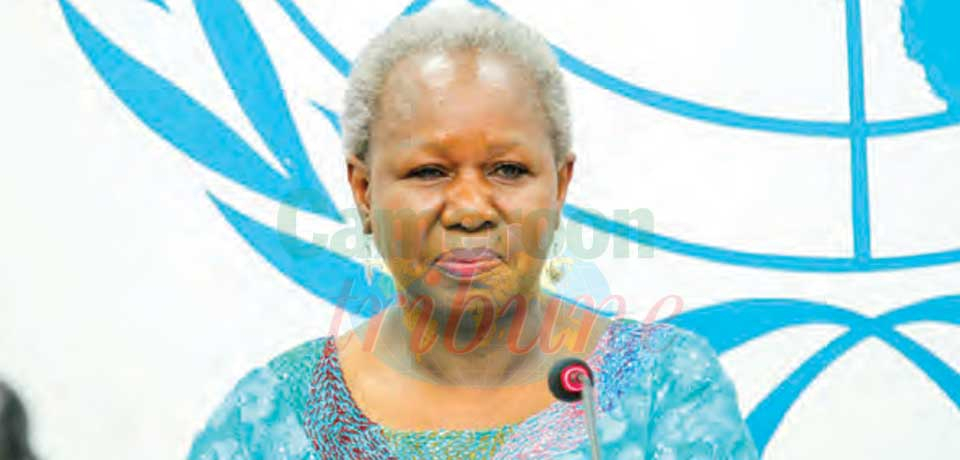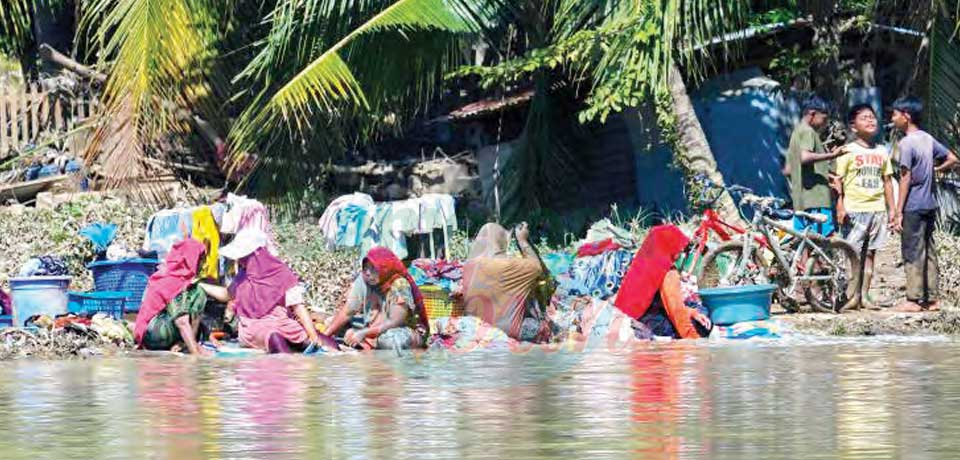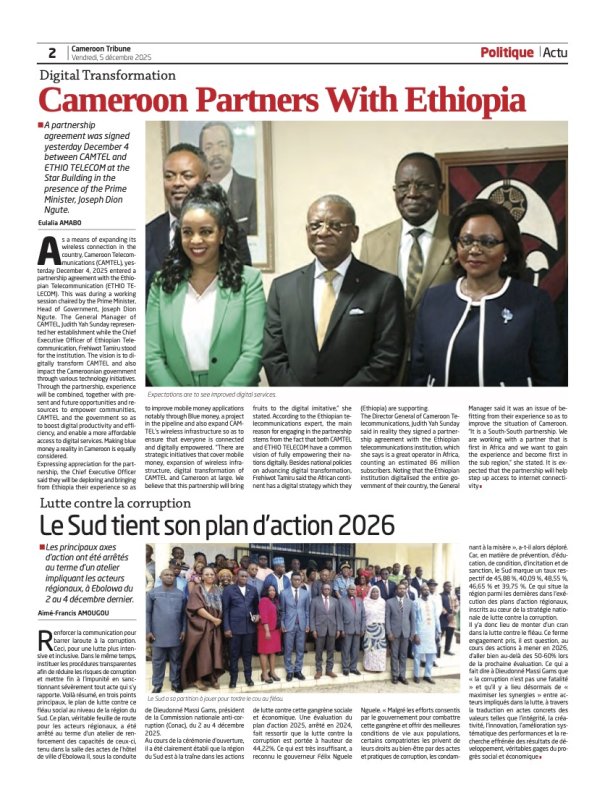China’s Africa “Debt Trap”: Sifting Facts From Deliberate Falsehood
- Par Kimeng Hilton
- 22 Jun 2022 09:19
- 0 Likes
Over the years, the West has launched a sustained campaign against China’s alleged ensnaring of developing countries with loans. Instead, Chinese investments are boosting economies, lifting livelihoods and raising infrastructure capacity.
“Opaque” Investments?
In providing foreign assistance, China always respects the sovereignty of recipient countries, attaches no strings whatsoever and pursues win-win outcomes. Chinese assistance has delivered real benefits to developing countries and received their acclaim and appreciation.
Loans Become Traps?
The so-called Chinese “debt trap” is a narrative the US and some Western countries use to defame and smear China, and disrupt China’s cooperation with developing countries. As a 2021 article in The Atlantic points out, the debt-trap narrative is just a lie fabricated by some Western politicians.
Who Does Africa Owe More?
The West is the largest creditor to developing countries. According to World Bank 2022 data on international debt, 28.8 per cent of Africa’s outstanding external debt is owed to multilateral financial institutions and 41.8 per cent to commercial creditors, mainly composed of Western financial institutions. These two institutions together hold nearly three-quarters of the debt, making them the primary creditors to Africa.
No Duress Exercised
The Director of the China Africa Research Initiative (CARI) at Johns Hopkins University in the US came up with an interesting finding. After scrutinizing thousands of Chinese loan documents, mostly for projects in Africa, CARI did not find any evidence that China deliberately pushes poor countries into debt to seize their assets or gain greater say in their internal affairs. CARI’s figures show that China holds 17 per cent of Africa’s overall external debt, far less than the West.
Strategic Assets Never Pawned
Not a single African country has been forced to use its strategic resources such as ports or mines as collateral for financing cooperation with China. Any default by an African country does not give China the right to use the relevant infrastructure. The debt issue is in essence a development issue. The key to resolving it lies in ensuring that loans deliver real benefits.
Which Sectors, What Benefits?
Western countries’ financing for Africa is mainly concentrated in non-production fields, and most loans come with political strings such as human rights and judicial reforms. Expectedly, they have failed to truly promote economic development, boost government tax revenue and improve balance of payments. Rather, they have served as instruments for controlling and causing harm in Africa.
China always respects the will of Africans and bears in mind the actual needs of African countries. Chinese investments and financing for Africa are mainly in infrastructure building and production-related fields. Entering the 21st Century, China has worked actively to support Africa’s economic development and provided an alternative to traditional financing channels of the Paris Club. This has helped the continent to strengthen its capacity of self-generated and self-reliant development and to usher in a golden age of high-speed economic growth for 20 straight years.
Investment Diversification
Professor Deborah Brautigam of Johns Hopkins University underscores the diversification of Chinese investments. Chinese companies in 2013 signed over 70 billion US dollars worth of construction contracts in Africa for vital infrastructure, including hospitals, oil and gas pipelines, and airports.
Tangible Investment Dividends
According to preliminary statistics from 2000-2020, China helped African countries build more than 13,000 kilometres of roads and railway, and more than 80 large-scale power facilities. It funded more than 130 medical facilities, 45 sports venues and over 170 schools. And trained more than 160,000 professionals across various fields.
The Nairobi Expressway built by Chinese companies in Kenya through public-private partnership has created more than 6,000 local jobs and benefited more than 200 subcontractors and several hundred local suppliers. Kenya speaks highly of the project, commending it as an important manifestation of mutually-beneficial and win-win cooperation. Nigeria’s Lekki Deep Sea Port project, built with Chinese participation, has provided more than 1,200 local jobs and is expected to create - directly and indirectly - 170,000 more jobs upon completion.
A study by Hong Kong scholars found that over 80 per cent of employees of Chinese companies in Africa were local Africans. A team from the London School of Economics and Political Science found that Chinese investments in Africa have produced “significant and persistently positive long-term effects.” Another study by RAND Corporation indicates that in the Belt and Road Initiative, BRI region, rail connection between trading partners has improved total exports by 2.8 per cent.
High Premium On Debt Sustainability
China attaches high importance to the debt sustainability of projects. Back in 2017, it signed the Guiding Principles on Financing the Development of the Belt and Road Initiative with 26 countries. In 2019, China released the Debt Sustainability Framework for Participating Countries of the Belt and Road Initiative. Based on the debt situation and repayment ability of debtor countries.
This was based on the principles of equal-footed consultation, compliance with laws and regulations, openness and transparency. The framework aims to strengthen monitoring and assessment of the economic, social and livelihood benefits of projects and channeling sovereign loans into areas with high yields to ensure long-term returns on projects. China has also taken proactive action to lessen the burden of debtor countries.
Favourable Debt Restructuring
According to the World Bank, from 2008-2021, China handled 71 cases of debt restructuring for low-income countries. In 2020, China actively responded to the G20’s Debt Service Suspension Initiative (DSSI) by suspending the payment of more than 1.3 billion US dollars of debt that year. This is nearly 30 per cent of the G20’s total, making it the largest contributor among G20 members. China has signed debt suspension agreements or reached mutual understanding on debt suspension with 19 African countries. As well as actively participated in the case-based debt settlement for Chad and Ethiopia under the G20’s Common Framework.
Action, Not Finger-pointing!
The US and some other Western countries, rather than taking action, instead point fingers at China for providing assistance. This has caused much displeasure among countries in the wider developing world.
Real Picture Left Out
Prof. Samita Hattige, Adviser to Sri Lanka’s National Education Commission, said in an interview with Global Times that Chinese loans are based on the needs of Sri Lanka and improve its infrastructure. “The loans have brought major changes to Sri Lanka’s economy and people’s livelihoods, and there is no such thing as a “debt trap,” Prof. Samita noted. China’s share in Sri Lanka’s external debt is about 10 per cent. Apparently, some media have chosen to ignore this fact.
While the “Chinese debt trap” hype by Western media seems plausible at a glance, it deliberately evades the huge economic benefits infrastructure improvement has created such as economic development, more jobs and investments.
Sri Lanka’s Success Story
The article “Sri Lanka, Bangladesh and Nepal Need China for Development” published by Sri Lanka’s Daily News on 17 January 2022 says, “South Asia needs China in its development process because China is synonymous with “development….China’s Belt and Road Initiative provides benefits to almost all South Asian countries….Sri Lanka is a beneficiary of Chinese projects,” the article continues. “Many talk only about the Chinese debt trap, but no one mentions Chinese development activities in Sri Lanka. They have invested heavily in seaports, airports... national highways, and power distribution centres” the article reads.
Who Is To Blame?
Ugandan President Yoweri Museveni in an interview with Nikkei in 2022 said: “Africa has been having (debt) problems for the last 600 years due to the Slave Trade, colonialism, neocolonialism - and none of it was from China.” “China supported Africa’s fight against colonialism before starting economic activity on the continent.”
Africa’s Free Choice
Rwandan President Paul Kagame pointed out that China’s presence in Africa is different from other countries: “I don’t think China has forced any country in Africa to take their money to accumulate the kind of debt you may find with some nations.” Nigerian Foreign Minister Geoffrey Onyeama said his country chooses Chinese companies for infrastructure projects because they are experienced and provide competitive rates. “So the issue of Chinese influence really doesn’t come in,” he stressed.
Independent Findings
According to a new study, Chinese banks from 2007-2020 offered more loans for development projects in Sub-Saharan Africa than some of the world's greatest economies combined, Ignatius Annor reported for the Voice of America, VOA on February 10, 2022. Annor cited the Washington- and London-based Centre for Global Development as saying Chinese development banks provided 23 billion US dollars to finance public-private partnerships in the region. More than double the 9.1 billion US dollars lent by banks from the US, Japan, Germany, The Netherlands, France and South Africa, the report discovered.
Is Africa Getting Enough?
According to Nancy Lee, the lead author of the study, the amount falls short of what Africa needs for roads, dams and bridges. The global think tank examined over 500 infrastructure projects with a private sector component that reached financial closure during the period.
Despite the 2015 “billions to trillions” vision by multilateral development banks, institutions such as the World ...
Cet article complet est réservé aux abonnés
Déjà abonné ? Identifiez-vous >
Accédez en illimité à Cameroon Tribune Digital à partir de 26250 FCFA
Je M'abonne1 minute suffit pour vous abonner à Cameroon Tribune Digital !
- Votre numéro spécial cameroon-tribune en version numérique
- Des encarts
- Des appels d'offres exclusives
- D'avant-première (accès 24h avant la publication)
- Des éditions consultables sur tous supports (smartphone, tablettes, PC)














Commentaires